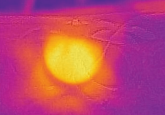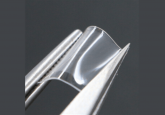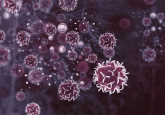Biocompatible nanofiber mats could revolutionize prolonged drug release

A collaboration of scientists from the Federal Research Clinical Center of Physical-Chemical Medicine, the Moscow Institute of Physics and Technology and Lomonosov Moscow State University have come together to engineer an electrospun nanofiber mat from famously incompatible components.
The researchers created a blended mat of nanofibers, which are made up of a combination of polymer and protein. The mat has been demonstrated to release the protein gradually and thus has many potential biomedical applications including as matrices for drug delivery, for wound dressings and in tissue engineering.
Electrospinning
Electrospun nanofiber mats have already been used for many applications in medicine, whether for cell cultures, drug delivery, catalytic matrices, protective clothing, antibacterial wound dressing or tissue engineering. Electrospinning involves manufacturing micro- and nanofibers using polymers under electrostatic field conditions. They are formed when a drop of polymer solution, under a voltage of approximately 20 kilovolts, becomes electrified and lengthens into a thin fiber as the Coulomb repulsion overcomes the surface tension.
The method is easily manipulated, and different components can be built into the nanofiber electrospun mats such as, carbon nanotubes, fluorescent dyes, drugs and antibacterial agents among others. This allows the mats to be specialized for a range of medical applications.
Polymer-protein mats
Electronspun mats often feature a carrier polymer that can incorporate extra components as well as ensuring stable fiber formation. Biodegradable and biocompatible polymers are most common for use in biomedical application with polylactic acid (PLA) being used for packaging, surgical threads, screws and pins.
PLA suffers from poor cell adhesion due to its hydrophobic nature and so it is combined with proteins that are nontoxic, hydrophilic and naturally metabolized allowing them to act as therapeutic agents.
To test the efficacy of the electrospun nanofiber mats, the team blended PLA with water-soluble bovine serum albumin. The results, when the mat was placed in a water medium, showed that half of the protein dissolved into the aqueous solution in just over a week. This suggests that the mat could be used for the prolonged release of protein-based drugs.
“Electrospun polymer-protein blended mats have many possible applications. By varying the amount of protein, you can tune how fast mat biodegradation happens. The protein’s numerous functional groups enable us to modify the mat surface by attaching chemical compounds to it. Protein-based blended mats could also be used as selective filters or for prolonged drug release, for example, in burn and wound dressings,” study co-author Dmitry Klinov of Moscow Institute of Physics commented.





